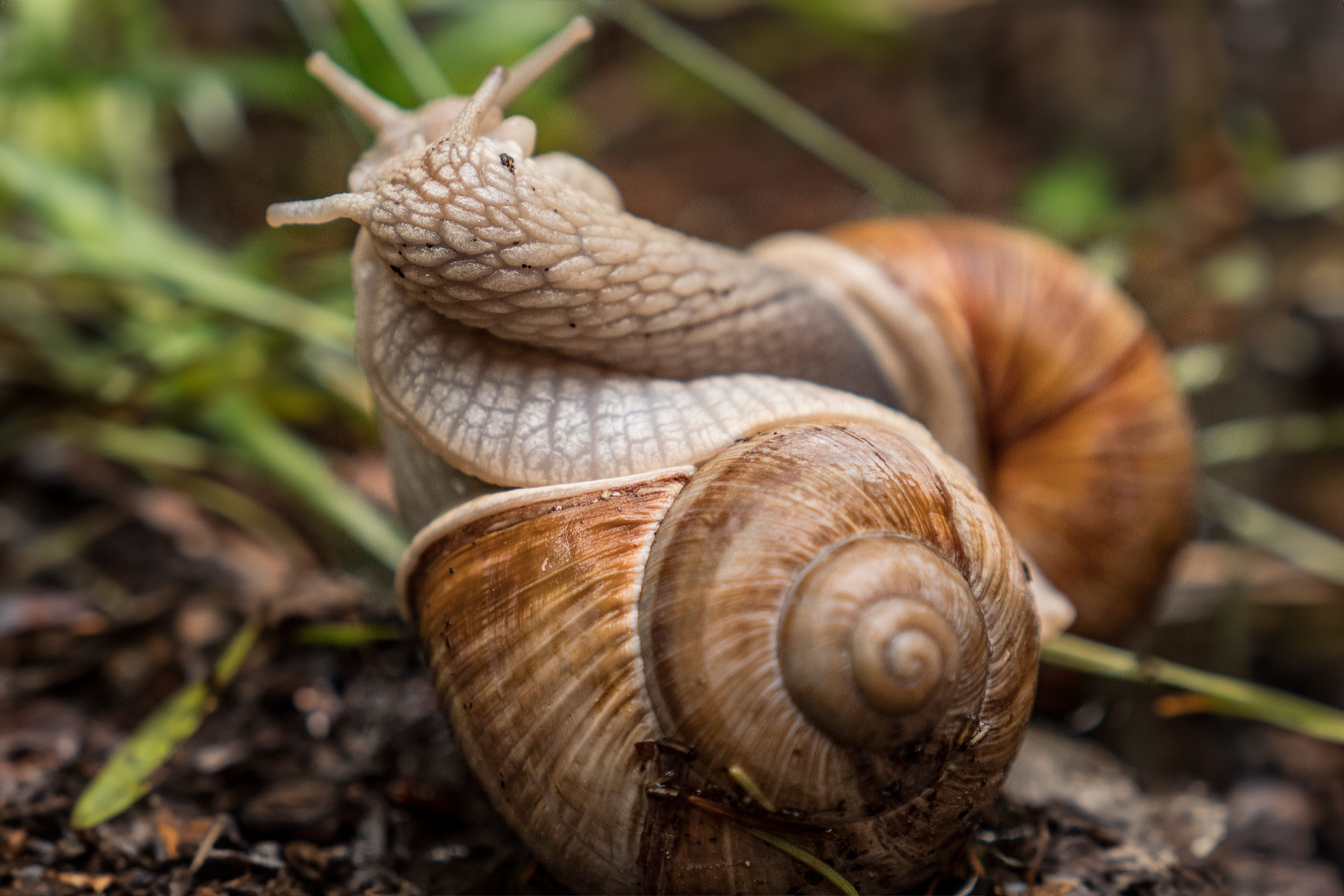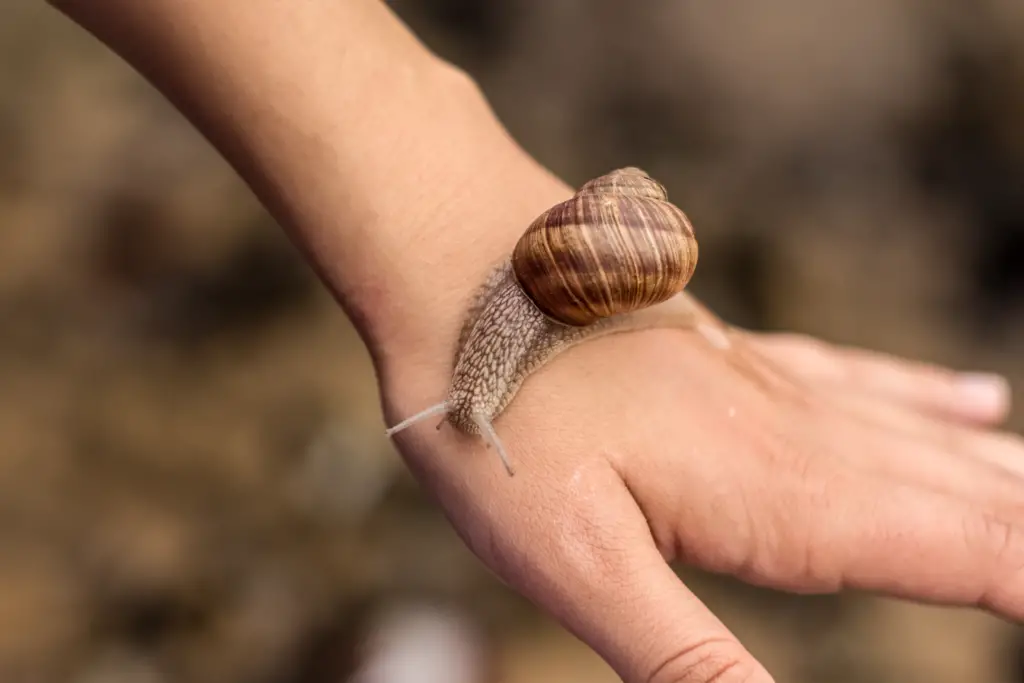
Understanding the reproductive habits of snails offers a fascinating glimpse into the diversity of nature’s breeding strategies. If you’ve ever wondered how these slow-moving creatures contribute to their populations, it’s interesting to learn that snails have a unique approach to reproduction. Many snail species are hermaphrodites, meaning they possess both male and female reproductive organs, which allows for a flexible reproductive strategy.
Your garden variety snail engages in a mating ritual that can include the use of a “love dart,” a calcareous spike that plays a role in the fertilization process. This isn’t as romantic as it sounds—it’s more of a biological tool that helps to increase the chances of successful reproduction. In their world, the love dart can influence who will fulfill the role of the female during mating.
Once mating is complete, the process of laying eggs begins. Depending on the species, the eggs can be laid in various environments, ranging from underground to leaves. The conditions for egg-laying must be conducive to the survival of the offspring, which is why many species go to such lengths to ensure the right humidity and temperature. The relentless work of these creatures in propagating their species is a remarkable aspect of their existence — slow and steady, but always moving forward.
Fundamentals of Snail Reproduction
Snail reproduction is fascinating, involving unique anatomical sex characteristics and a distinct reproductive cycle. Your journey through understanding how snails create new life starts here.
Anatomical Sex Characteristics
Snails are unique creatures with hermaphroditic traits; this means you’ll find both male and female reproductive organs within a single snail. However, not all species have the capacity for self-fertilization; instead, many need a partner to exchange sperm. You can read more about their hermaphroditic nature at Snail Farming World’s discussion on snail reproduction.
Reproductive Cycle
The reproductive cycle of snails involves several key steps: courtship, fertilization, and egg-laying. During courtship, snails often engage in a slow, ritualistic dance. After exchanging sperm, the snails will later lay their eggs in soil or another soft substrate, depending on the species. The eggs develop and hatch into young snails, completing the cycle. For more specifics on this cycle, have a look at Hepper’s detailed explanation on how snails reproduce.
Mating Process
In the fascinating world of snails, the mating process is a unique ritual encompassing both courtship and fertilization mechanics. As you delve into these methods, you’ll discover the intricate behaviors and physical interactions snails use to reproduce.
Courtship Behavior
Snails are known for their slow-paced lifestyle, but during courtship, they engage in an elaborate and lengthy ritual. This can include gentle biting, crawling over each other, and sometimes the use of a “love dart,” which some species employ as part of their mating ritual. The love dart is a sharp calcareous or chitinous spike that one snail thrusts into the other snail’s body to increase fertilization odds.
Fertilization Mechanics
During the actual mating, snails will align themselves to permit the transfer of sperm, which can be a versatile affair since many snails are hermaphrodites, having both male and female reproductive organs. They can assume either the male or female role in the mating process. The fertilization process usually occurs through internal means. Subsequently, the snail considered to be in the female role will lay the fertilized eggs in a safe and suitable location in the soil.
Through understanding these aspects of snail reproduction, you gain insight into the delicate balance they maintain in nature’s ecosystem.
Egg Development and Hatching
When you learn about snails, you’ll find that their reproductive process includes a fascinating stage of egg development and hatching. After mating, a snail lays its eggs in small holes or beneath objects like logs, making a snug environment for their development.
Egg Laying: Snails usually lay their eggs about two weeks after fertilization. The number of eggs can vary greatly; some species lay just a few, while others can deposit hundreds.
Calcium Need: These eggs are rich in calcium, protecting them with a hard shell. If you’re curious about how they get enough calcium, snails often consume soil or even the shells of other snails’ eggs to meet this nutritional requirement.
Incubation Period: The duration before the eggs hatch can span from 2 weeks to a month, heavily dependent on the species and environmental conditions. Warmer surroundings generally speed up the hatching process.
- Translucent Shells: Upon hatching, baby snails have soft, translucent shells.
- Growth: They start to feed immediately—sometimes on the remnants of their own eggs—to kickstart their growth.
Here’s an interesting bit about their shells: as snails mature, their shells not only harden but also gain color, becoming the familiar snail shell you recognize.
For a deeper dive into the intricacies of the snail’s life cycle, particularly where egg laying and hatching are concerned, have a look at Snail Life Cycle – Birth, Development & Mating Habits, which offers a detailed exploration of these processes.
Environmental Factors Affecting Reproduction
When you’re considering how your aquarium snails reproduce, it’s crucial to account for the environmental conditions that can significantly influence their reproductive process.
Temperature
Warm water tends to stimulate snail reproduction, as higher temperatures can speed up their metabolic rate, leading to increased activity, including mating. However, it’s important to maintain a stable temperature range, as fluctuations can be stressful and may hinder reproduction.
Water Quality
Water parameters like pH levels and hardness are vital to snail health, affecting their ability to reproduce. Ensure your tank is well-filtered and carry out regular water changes to keep toxins at bay.
Food Supply
A nutrient-rich diet supplies the energy snails need for reproduction. Overfeeding, on the other hand, can lead to poor water quality, affecting their health and reproductive rate.
Space
Snails require sufficient space to move and find mates. Overcrowded conditions can cause stress and may lead to reduced rates of successful copulation and egg-laying.
Here’s a quick reference:
| Factor | Why It’s Important |
|---|---|
| Temperature | Warmer water can increase reproduction |
| Water Quality | Toxins and pH levels affect health |
| Food | Adequate diet supports egg production |
| Space | Prevents stress and encourages mating |
By carefully managing these factors, you can create an environment that supports the healthy reproduction of your aquarium snails. Remember, stability is key to giving your snails the best chance to thrive and multiply.
Frequently Asked Questions
Snails have fascinating reproductive behaviors that often pique the curiosity of many. Let’s address some common queries you might have about how snails reproduce.
Are snails hermaphrodites?
Yes, many snail species are hermaphrodites, possessing both male and female reproductive organs. This allows them to perform both roles during reproduction.
How do snails give birth?
Snails lay eggs after mating. The snail responsible for laying the eggs will deposit them in a safe and moist environment, typically in the soil or at the base of plants.
How do aquarium snails reproduce?
Many aquarium snails also exhibit hermaphroditic traits, allowing a single snail to produce both eggs and sperm, which can lead to reproduction without a mate.
How often do snails reproduce?
The frequency of reproduction can vary depending on the snail species. Some can mate and lay eggs multiple times a year under favorable conditions.
How quickly do snails reproduce?
Reproduction rates can vary; some species can rapidly populate an area, especially if the environmental conditions are suitable. This is a factor to consider in your aquarium to prevent overpopulation.
Do snails lay eggs?
Yes, snails do lay eggs. After fertilization, a snail will bury its eggs in the ground, under leaves, or in other protected places to ensure the next generation’s safety.
Driven by a passion for those tiny creatures that rule our world, we at Bug Domain strive to be your go-to resource for information on insects.




